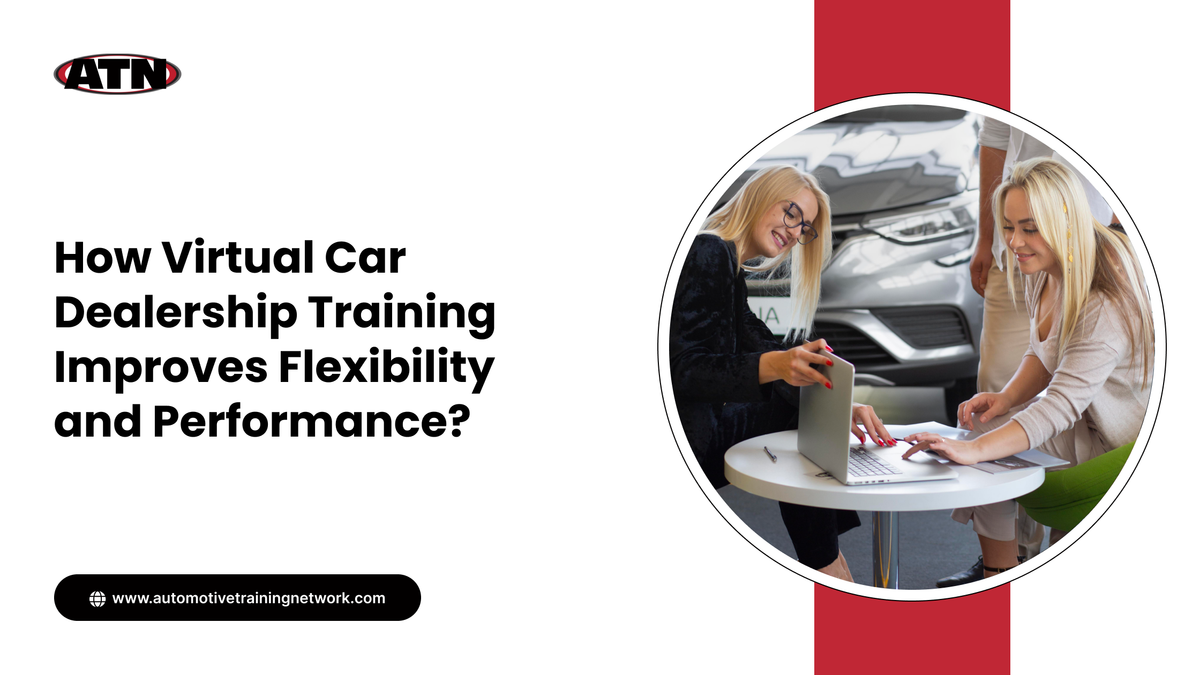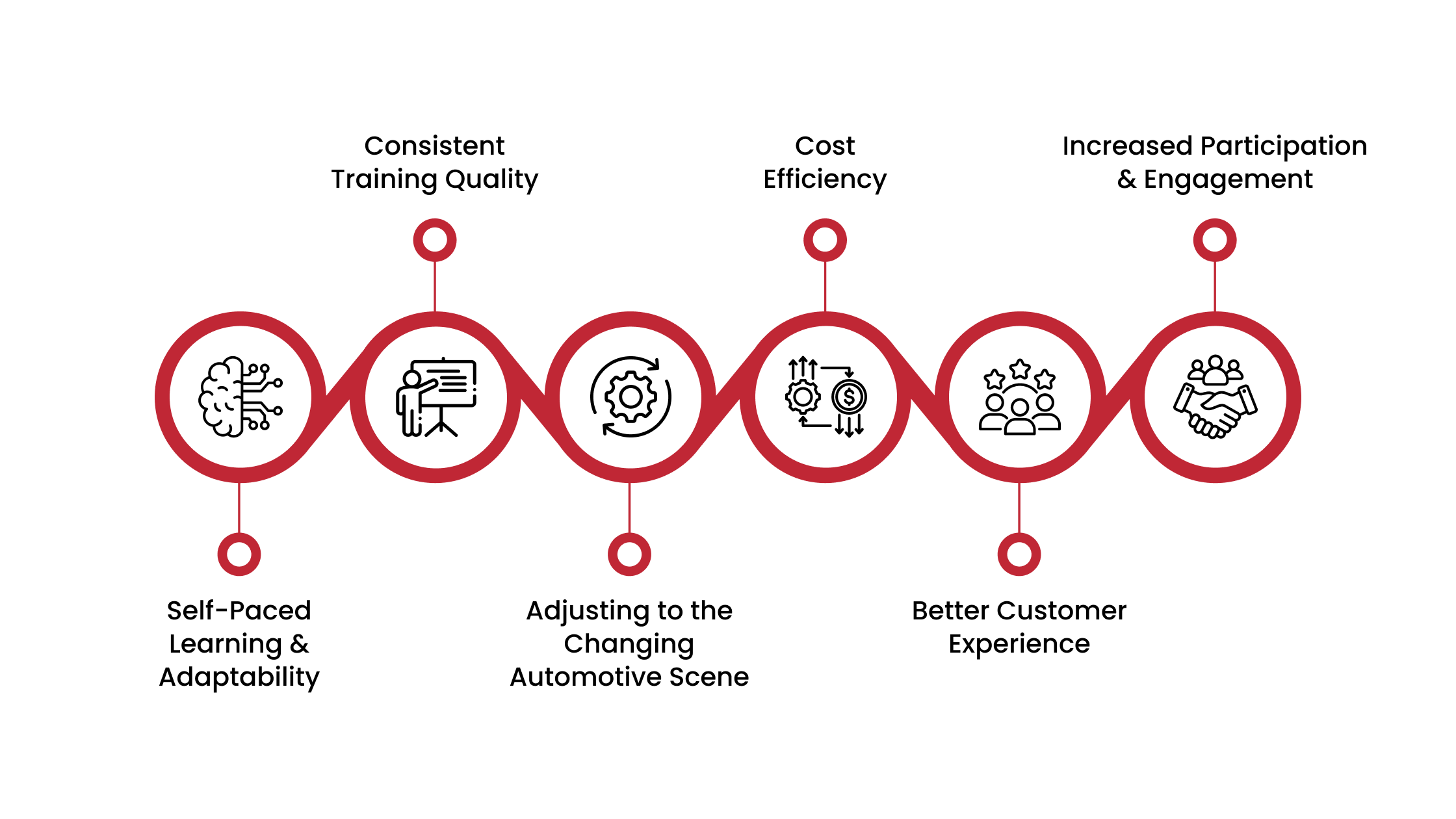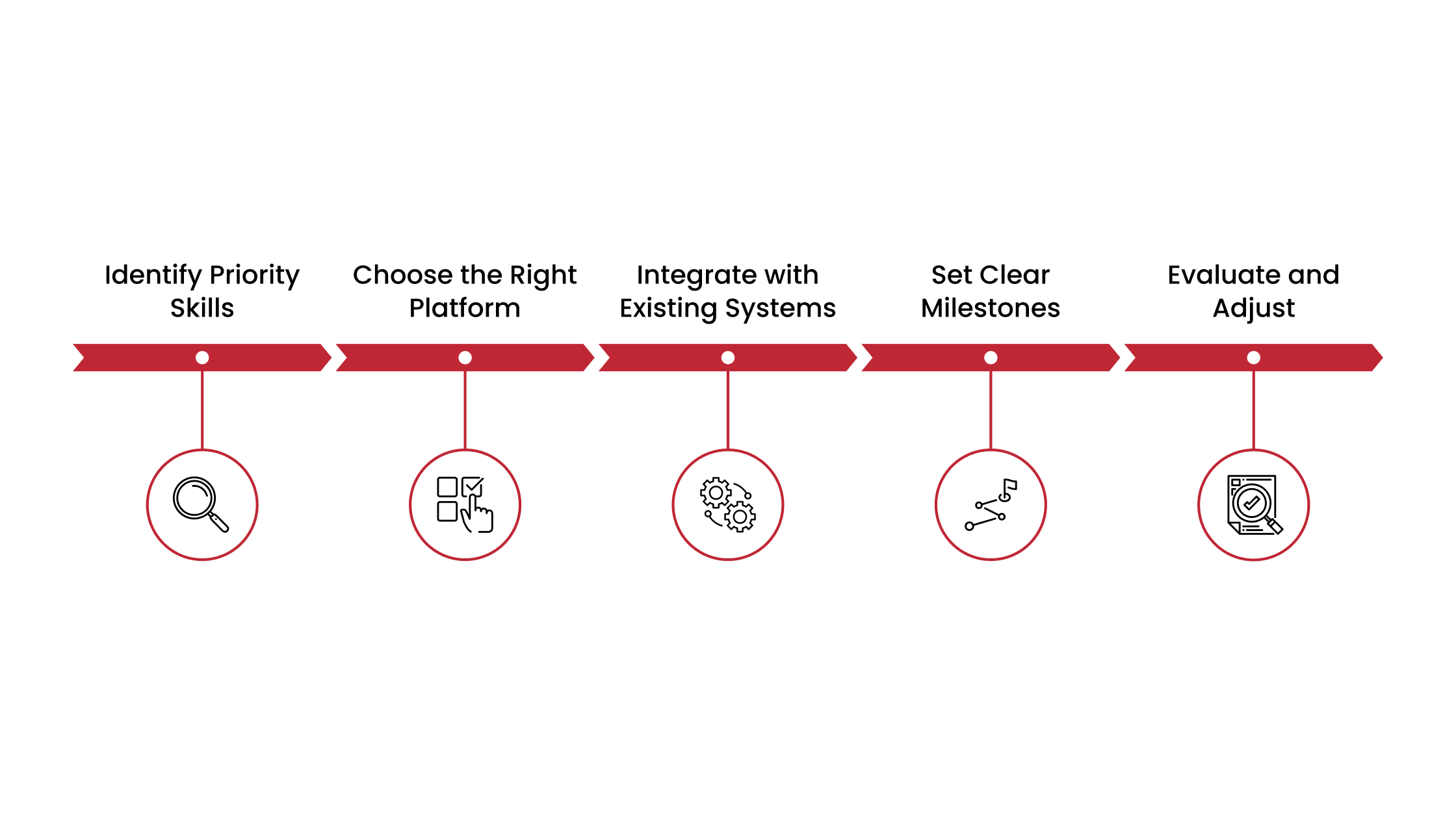How Virtual Car Dealership Training Improves Flexibility and Performance?

Is your dealership still relying on long, off-site training sessions that pull staff off the sales floor?Do your managers struggle to keep training consistent across multiple locations?Are new hires waiting weeks before they’re fully productive?
If this is the scenario in your dealership, your dealership may soon be part of the industry’s 67% annual sales consultant turnover rate, a costly challenge that disrupts performance, damages customer relationships, and drives up recruitment expenses.
In-person training often can’t keep up with today’s market demands. It’s rigid, expensive, and slows your team’s ability to adapt to changing buyer expectations, new sales channels, and tighter margins.
On the other hand, virtual car dealership training addresses these challenges directly. Flexible, on-demand, and scalable, it allows dealerships to onboard faster, reinforce skills consistently, and track progress in real time, creating stronger, more capable teams ready to perform in a competitive market.
So, let’s understand how implementing virtual car dealership training can strengthen your team and position your dealership for sustained success.
Here’s a more professional, clear, and engaging revision — both the heading and the content flow are improved to set up the section logically and keep it reader-friendly.
Why More Dealerships Are Moving to Virtual Training
As automotive retail shifts toward digital retailing and omnichannel sales models, dealership training needs are evolving. Customers now expect faster responses, better-informed staff, and a seamless experience across both online and in-store touchpoints. Meeting these expectations requires training solutions that are accessible, consistent, and adaptable.
More dealerships are turning to virtual car dealership training to meet these demands. Available anytime and anywhere, these programs allow staff to learn without disrupting daily operations.
Technology is making this transition even more effective. Today’s platforms integrate:
- Virtual reality for immersive role-play scenarios
- Augmented reality for interactive product walkarounds
- Gamification features to maintain engagement
- AI-driven analytics to track progress, identify skill gaps, and recommend targeted modules
By combining accessibility with advanced learning methods, virtual car dealership training delivers programs that are both flexible and results-driven, enabling dealerships to keep pace with changing customer expectations and the demands of a modern sales process.
Top 6 Benefits of Virtual Training for Dealerships

Shifting training into a virtual environment opens the door to training more people, more frequently, and with greater impact. The real value comes from how this approach turns learning into measurable business gains, from higher team performance to better customer experiences.
1. Self-Paced Learning & Adaptability
Time is always at a premium in a dealership environment. Sales consultants are juggling appointments, service teams are managing back-to-back repairs, and BDC managers are fielding a constant flow of calls and leads.
Conventional training often means pulling these employees out of the workflow for hours or even days at a time, which can impact productivity and disrupt customer service.
Virtual car dealership courses can be accessed on demand, allowing staff to work through lessons in shorter bursts during slower periods or outside peak hours. It’s training that adapts to the dealership’s pace, not the other way around.
With ATN’s virtual platform, for example, dealerships can assign targeted modules, like How to Sell 20+ Units a Month or Digital Lead Management, and allow each team member to complete them at their convenience. This keeps the sales floor running while still building skills consistently across the board.
Common advantages include:
- Learning is available 24/7 from any device
- No travel or venue costs interrupting operations
- Standardized content for all locations in a group
- Ability to start, pause, and resume courses anytime
- Quick access to updates when manufacturer or market changes occur
For multi-rooftop groups, the benefits multiply. One standardized program can be rolled out across all locations, ensuring consistency while still giving each team the autonomy to complete it on their schedule.
Whether it’s a new hire in a rural satellite store or a veteran consultant in a flagship location, everyone can receive the same high-quality instruction without logistical roadblocks.
2. Consistent Training Quality
A dealership’s success hinges on the skill, confidence, and consistency of its team. Even the most motivated employees can struggle to maintain peak performance without regular reinforcement of best practices.
Virtual car dealership training addresses this by delivering structured, repeatable lessons that keep essential skills sharp and introduce new techniques as the market changes.
Virtual programs make it possible to revisit essential topics whenever needed. A sales consultant preparing for a high-value customer meeting can refresh their objection-handling skills that morning. A BDC manager can review appointment-setting techniques between calls. These small, targeted refreshers translate into better execution on the floor and higher conversion rates.
How virtual training drives measurable results:
- Standardized Learning: Ensures every team member receives the same high-quality instruction
- Interactive Engagement: Role-play simulations, quizzes, and scenario-based learning boost retention
- Performance Tracking: Real-time data helps managers identify skill gaps and provide targeted coaching
- Practical Application: Skills can be applied immediately to real-world customer interactions
- Up-to-Date Content: Access to current processes and compliance requirements keeps teams aligned
The result is that the team is well-trained and adaptable. As customer expectations, market conditions, and product offerings change, virtual training equips staff with the resources and knowledge to respond quickly, driving consistent performance across sales, service, and BDC operations.
3. Adjusting to the Changing Automotive Scene
The automotive industry is in a constant state of change, shaped by new technologies, shifting consumer expectations, and newer sales models. Virtual training enables dealerships to keep their teams aligned with these developments without disrupting daily operations.
Content can be updated quickly to reflect new OEM requirements, compliance regulations, or product launches, ensuring employees always have the most current knowledge. It also allows staff to adapt to emerging sales strategies, such as online retailing or subscription-based ownership so that they can meet customer expectations ahead of the competition.
By making adaptation part of the learning process, dealerships maintain agility and stay relevant in a marketplace where change is the only constant.
4. Cost Efficiency
Virtual training reduces the financial strain often associated with traditional, in-person programs. Without the need for travel, venue rentals, or printed materials, dealerships can allocate resources directly toward improving operations and customer service.
Ways virtual training lowers costs:
- No Travel or Accommodation: Eliminates expenses for off-site sessions and trainer visits
- Scalable for Any Team Size: Adding new learners doesn’t significantly increase costs
- Minimal Disruption: Training during slower periods avoids lost sales opportunities
- Resource Savings: Digital content replaces costly physical materials and can be updated instantly
The result is a training approach that delivers measurable improvements without inflating operational budgets, making it a practical, long-term investment for any dealership.
5. Better Customer Experience
Well-trained employees create more confident, personalized, and efficient customer interactions. When staff have easy access to up-to-date training, they can answer questions accurately, guide buyers through the process seamlessly, and build trust from the first interaction. This translates into higher satisfaction, stronger loyalty, and more repeat business.
How virtual training elevates the customer journey:
- Better Product Knowledge: Enables clear, confident communication about vehicle features and benefits
- Faster Response Times: Staff can address inquiries promptly, both in person and online
- Stronger Relationship Skills: Training in active listening and customer rapport leads to more meaningful interactions
- Consistency Across Touchpoints: Ensures every customer receives the same high-quality service, whether in-store, online, or by phone
ATN’s industry expertise, shaped by decades of dealership training worldwide, means its virtual car dealership modules are built around real customer scenarios, helping teams apply learning in ways that directly improve the buying experience.
This focus on practical, customer-first skills ensures training benefits extend beyond the showroom floor to every stage of the sales and service process.
6. Increased Participation & Engagement
Training only delivers results when employees actively engage with it. Virtual platforms create a more inviting learning experience through interactive features like quizzes, scenario-based exercises, and real-time feedback. These elements transform training from a passive activity into an active process where participants are more invested in mastering the material.
Higher participation means skills are absorbed more effectively and retained for longer. When employees are engaged, they’re more likely to apply new techniques in fundamental customer interactions, improving communication, building stronger relationships, and ultimately boosting sales performance.
This engagement also fosters a sense of ownership, as staff can see their progress, track their achievements, and take pride in their professional development. Over time, this creates a more motivated workforce that’s consistently striving to improve results.
Implementing Virtual Training in Your Dealership

Adopting virtual training works best when it’s planned with operational needs and long-term goals in mind. The right platform should integrate smoothly with existing workflows, engage staff, and deliver measurable outcomes.
Steps to ensure a successful rollout:
- Identify Priority Skills: Focus first on areas with the most significant impact on sales, service, or CSI scores.
- Choose the Right Platform: Look for a user-friendly design, mobile access, and interactive content that keeps learners engaged.
- Integrate with Existing Systems: Ensure compatibility with your dealership management system for seamless adoption.
- Set Clear Milestones: Establish timelines and goals for course completion, skill application, and measurable improvements.
- Evaluate and Adjust: Review performance data regularly to refine training plans and close skill gaps.
A well-implemented virtual training program complements in-person learning. Dealerships that combine structured online modules with ongoing coaching and accountability see faster skill development, more consistent performance, and a more substantial return on training investments.
Drive Sales and Service Success with the Right Training from ATN

Virtual training is now a necessity for dealerships that want to remain competitive. In an environment where customer expectations are high and market conditions shift quickly, the dealerships that invest in continuous learning will be the ones that thrive.
Virtual programs offer the flexibility, scalability, and measurable results needed to build stronger teams and deliver consistent, high-quality service.
Why dealerships choose Automotive Training Network for virtual car dealership training:
- Proven Industry Expertise: Over 40 years of hands-on dealership training worldwide
- Interactive Learning: Engaging modules that build and reinforce real-world skills
- Train → Test → Certify Approach: Ensures knowledge is retained and applied effectively
- Diverse Course Library: Covering sales, BDC, lead management, and more
- Results-Driven Structure: Planned to increase units sold, improve CSI scores, and boost team confidence
ATN’s decades of dealership training experience, combined with its interactive virtual platform, make it easier than ever to develop the skills your team needs, on their time, at their pace, and with proven results.
Get started today and see how the right training can transform your dealership’s performance.
